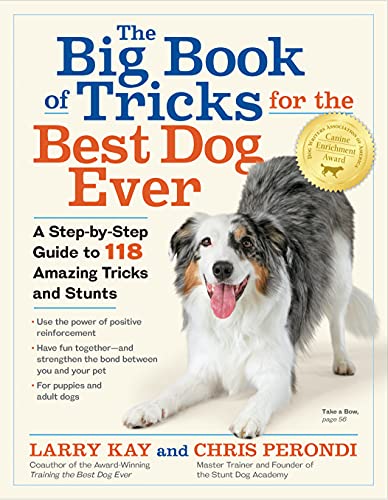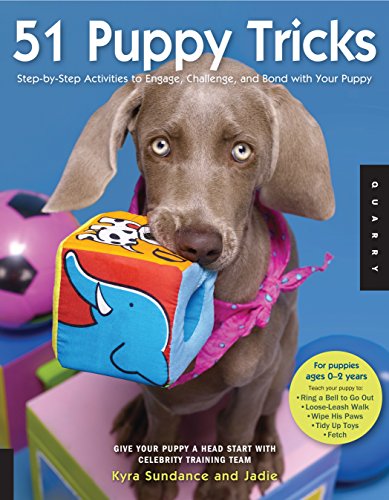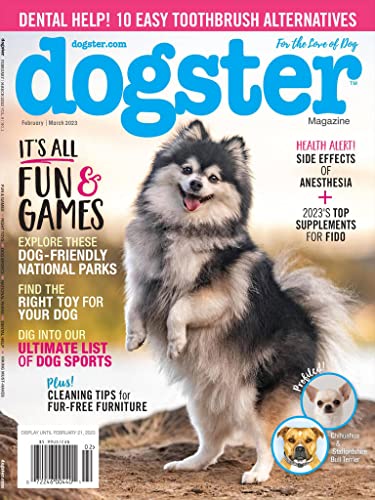When looking for the best books for dog training, there are five key points to consider. Firstly, it’s important to look for a book that’s tailored to your dog’s breed and age. Different breeds and ages require different training approaches, so it’s important to find a book that’s specific to your pup. Secondly, you’ll want to look for a book that’s written by a reputable author or trainer. Thirdly, look for a book that covers the basics of dog training, such as obedience, housebreaking, and socialization. Fourthly, make sure the book is written in easy-to-understand language and includes clear instructions. Finally, check out customer reviews to see what other dog owners think of the book.
Finding the best books for dog training can be a daunting task. With so many options out there, it’s important to take your time and consider the five key points outlined above. Make sure the book you choose is tailored to your pup’s breed and age, written by a reputable author or trainer, covers the basics of dog training, is written in easy-to-understand language, and has good customer reviews. With the right book, you’ll be well on your way to training your pup.
10 Best Books For Dog Training
| # | Product Image | Product Name | Check Price |
|---|---|---|---|
|
1
|
|
||
|
2
|
|
||
|
3
|
|
||
|
4
|
|
||
|
5
|
|
||
|
6
|
|
||
|
7
|
|
||
|
8
|
|
||
|
9
|
|
||
|
10
|
|
1. The Big Book Of Tricks For The Best Dog Ever: A Step-By-Step Guide To 118 Amazing Tricks And Stunts

This book is a great resource for any dog owner who wants to teach their pup some amazing tricks and stunts. The Big Book of Tricks for the Best Dog Ever: A Step-by-Step Guide to 118 Amazing Tricks and Stunts is written in English and is an easy-to-follow guide for teaching your pup the basics and more. With detailed instructions and pictures, you will be able to teach your pup some amazing tricks and stunts. Whether you have an old pup or one who is just starting out, this book has something for everyone.
You will learn how to teach your pup to roll over, shake, wave, and dance, as well as more complex tricks such as jumping through a hoop, playing hide and seek, or even playing fetch. This book also includes tips and tricks to keep your pup motivated and engaged in the learning process. You can also learn how to use rewards and positive reinforcement to get your pup to obey commands.
The Big Book of Tricks for the Best Dog Ever: A Step-by-Step Guide to 118 Amazing Tricks and Stunts is a great resource for any dog owner who wants to teach their pup some amazing tricks and stunts. With detailed instructions and pictures, you can learn how to teach your pup amazing tricks and stunts that will impress friends and family. This book is written in English and is bound in paperback for easy reference. Whether you have an old pup or one who is just starting out, this book has something for everyone.
2. Animal Facts 1000: Fun Facts About Animals Worldwide

Experience the fun and excitement of Animal Facts 1000! This app is packed with cool and interesting facts about animals around the world. Learn about zoo animals, cats, dogs, kittens, puppies, and farm animals. Kids can enjoy the random, weird, and strange trivia crack games included in the app. Plus, you can save your favorite animal facts, share them via email or SMS, and even train your pets with the included dog and cat whistle. Animal Facts 1000 is the perfect app for any animal enthusiast, providing hours of educational fun. Download now and experience the world of animals like never before!
Best Books For Dog Training FAQs
What are the 4 D's of dog training?
The 4 D's of dog training are:
1. Discipline: Discipline is the foundation of any successful dog training program. It involves teaching your dog the rules of the house and setting boundaries. This includes teaching your dog basic commands such as sit, stay, come, and leave it. It also involves teaching your dog how to behave in public and how to respond to distractions.
2. Direction: Direction is the next step in dog training. This involves teaching your dog how to follow your commands and how to respond to cues. This includes teaching your dog how to heel, how to walk on a leash, and how to respond to hand signals.
3. Distraction: Distraction is an important part of dog training. This involves teaching your dog how to stay focused and ignore distractions. This includes teaching your dog how to ignore other dogs, people, and objects.
4. Desensitization: Desensitization is the final step in dog training. This involves teaching your dog how to cope with new and unfamiliar situations. This includes teaching your dog how to stay calm in the presence of loud noises, unfamiliar people, and strange objects.
These four D's of dog training are essential for any successful dog training program. By teaching your dog these four D's, you can ensure that your dog is well-behaved and obedient. With patience and consistency, you can help your dog become a well-mannered and obedient companion.
What are the 5 golden rules of dog training?
1. Establish Clear Rules and Boundaries: It is important to establish clear rules and boundaries for your dog. This will help them understand what is expected of them and what behaviors are acceptable. Make sure to be consistent with your rules and be sure to reward your dog when they follow them.
2. Use Positive Reinforcement: Positive reinforcement is one of the most effective tools for training your dog. Whenever your dog does something you want them to do, reward them with treats, praise, or a toy. This will help them understand that they are doing something right and will encourage them to continue the behavior.
3. Be Patient: Training your dog takes time and patience. Don’t expect your dog to learn everything overnight. Be patient and consistent with your training and your dog will eventually learn what you are trying to teach them.
4. Be Consistent: Consistency is key when it comes to training your dog. Make sure to use the same commands and rewards each time you train your dog. This will help them understand what you are asking of them and will make it easier for them to learn.
5. Have Fun: Training your dog should be a fun and rewarding experience for both you and your dog. Make sure to take breaks and have fun with your dog during training sessions. This will help keep your dog motivated and will make training more enjoyable for both of you.
What are the 7 commands for a dog?
1. Sit: This is one of the most basic commands for a dog and is used to get them to sit down and stay in one place.
2. Stay: This command is used to get the dog to stay in one place and not move until given a release command.
3. Come: This command is used to get the dog to come to you when called.
4. Heel: This command is used to get the dog to walk beside you in a heel position.
5. Down: This command is used to get the dog to lie down on the ground.
6. Leave it: This command is used to get the dog to stop paying attention to something and move away from it.
7. Drop it: This command is used to get the dog to drop whatever it is holding in its mouth.
These commands are the foundation of any successful dog training program. They are essential for teaching a dog basic obedience and good manners. With consistent practice and positive reinforcement, these commands can be taught to any dog. It is important to remember that dogs learn best through positive reinforcement and repetition. It is also important to be patient and consistent when teaching a dog these commands. With patience and consistency, any dog can learn these commands and become a well-behaved and obedient pet.
What is the most effective dog training method?
The most effective dog training method is positive reinforcement. Positive reinforcement involves rewarding desired behaviors with treats, praise, or other rewards. This method is effective because it encourages the dog to repeat the desired behavior in order to receive the reward. Positive reinforcement also helps to build a strong bond between the dog and the trainer, as the dog learns to associate the trainer with positive experiences.
Positive reinforcement should be used in combination with other training methods, such as clicker training, shaping, and luring. Clicker training involves using a clicker to mark the desired behavior, and then rewarding the dog with a treat. Shaping involves gradually teaching the dog a behavior by rewarding successive approximations of the desired behavior. Luring involves using a treat to guide the dog into the desired behavior.
When using positive reinforcement, it is important to be consistent and patient. Dogs learn best when they are rewarded immediately after performing the desired behavior. It is also important to use rewards that the dog finds motivating, such as treats, toys, or verbal praise.
Overall, positive reinforcement is an effective and humane way to train dogs. It encourages desired behaviors and builds a strong bond between the dog and the trainer. When used in combination with other training methods, it can be an effective way to train dogs of all ages and breeds.









